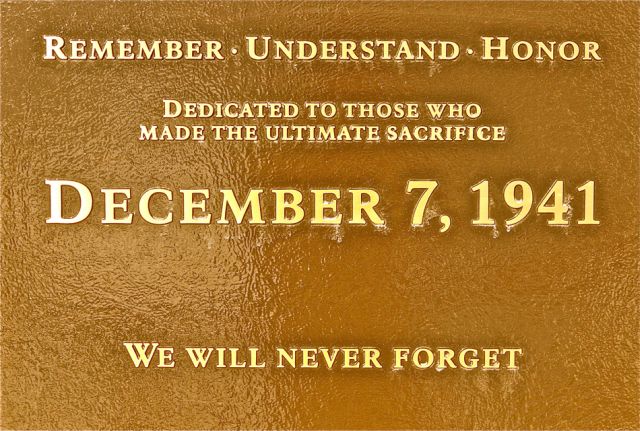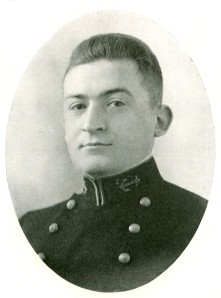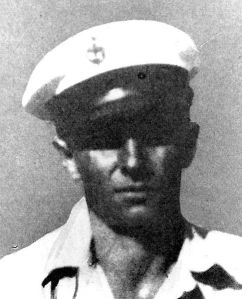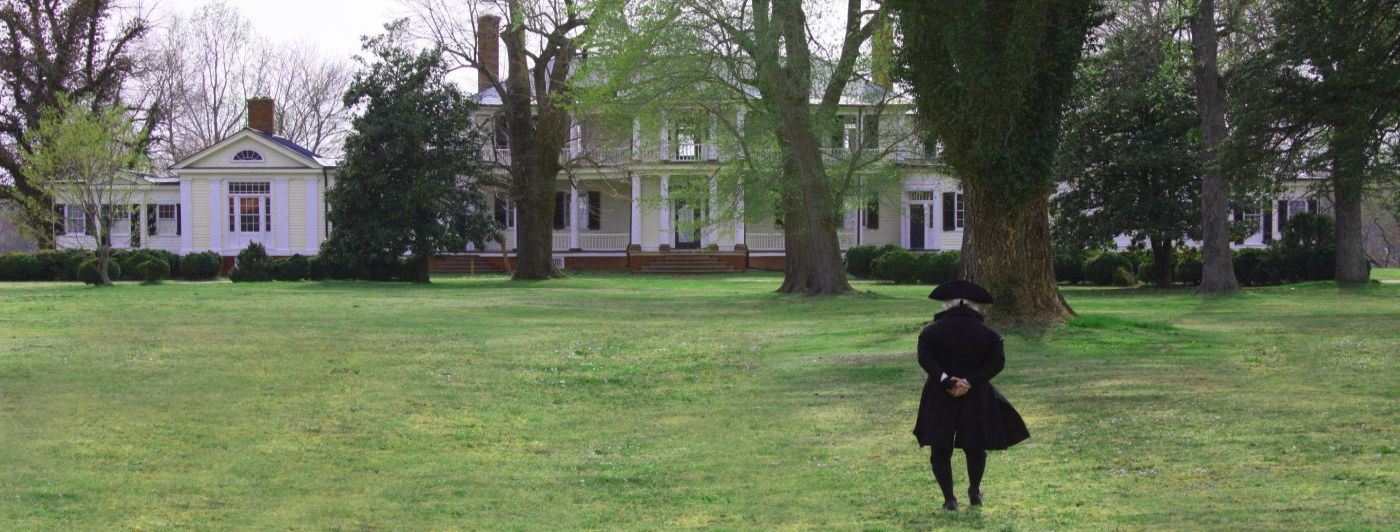We Will Never Forget

Seventy-one years ago, the United State faced its first major attack on its own soil. Today, we remember those who fought and died at Pearl Harbor, Hawaii. On this day, 2,403 people gave their lives in the attack. Of those, 2/3 of those who died occurred in the first 15 minutes of the 110 minute battle. Of those who died, 2,008 were in the Navy, 109 were in the Marine Corps, 218 were in the Army and 68 were civilians. There was an additional 1,178 wounded.

USS Utah
We all know the stories of the USS Arizona and USS Oklahoma, but how many of you know the story of the USS Utah? Brett and I had the opportunity to visit Hawaii in November, 2001, just two months after September 11th. We made a point to go and see Pearl Harbor. After experiencing our own major attack, Pearl Harbor had so much more meaning to us.

Ford Island
As an active duty military member, we were able to go onto Ford Island and see up close and personal what was left after the battle. We walked the landing strip in the middle of the island. As we walked, I stopped to place my finger into the holes left behind by the bullets that rained down on it during the attack. We walked pass the buildings, many with the same bullet holes still visible.
Of all the things we saw in Pearl Harbor, the one that got to me the most was that of the USS Utah. The USS Utah was tied up on the opposite side of Ford Island when the attack happened, so most do not see the memorial that is there now. But the story of this ship is one that shouldn’t be lost to time.
The USS Utah was a naval battleship built in Camden, New Jersey in 1909. This was the only ship in the Navy to be named for the state of Utah. She was launched in December 1909 and commissioned in the Philadelphia Navy Yard on August 21, 1911. She would have a complement of 1,041 officers and men aboard.
On December 7, 1941, the Utah was moored off Ford Island in berth F-11. That morning the Captain and Executive Officer were ashore on leave. On board, the senior officer was Lieutenant Commander Solomon S. Isquith, an Engineer.

Lieutenant Commander Solomon S. Isquith
At just before 8am, the men on topside saw three planes that they thought were American planes, heading in a northerly direction from the harbor entrance. The airplanes made a low dive towards the southern side of Ford Island and began dropping bombs.
The attack on the Utah only lasted for a few minutes. At 8:01am, the ship took a torpedo hit forward and immediately started to list to port and settle hard by the stern. The ship began to roll over on her beam ends. These are 6 inch x 12 inch timbers placed on the decks to cushion them against the impact of the bombs used during the ship’s latest stint as a mobile target. These timbers began to shift and would hamper the crew from abandoning ship.

Chief Watertender Peter Tomich
Below, men headed topside while they could. One man, Chief Watertender Peter Tomich, remained below, making sure that the boilers and water pumps were secure and that all the men had gotten out of the engineering spaces. Another man, Fireman John B. Vaessen, remained at his post in the dynamo room, making sure that the ship had enough power to keep her lights on as long as possible.
Commander Isquith, while making an inspection to clear the ship, nearly became trapped himself. As the ship began to turn over, he found an escape hatch blocked. While he was attempting to escape through a porthole, a table he was standing on slipped out from under him. Just as it did, a man outside grabbed his arm and pulled him through at the last instant.
By 8:12am, the mooring lines snapped and the Utah rolled over on her beam ends. Some of her survivors swam to shore while others took shelter on the mooring quays because the attack was still going on.
Once Commander Isquith and others had reached the shore, they heard knocking from within the overturned ship. Commander Isquith called for volunteers to return to the ship to investigate the tapping. The men obtained a cutting torch from the Raleigh, who was also fighting to survive after an earlier torpedo hit. As a result of the four volunteers efforts one man, Fireman John Vaessen escaped from a would-be tomb. Fifty-four men would not escape from the USS Utah.

USS Utah
today
Today, the USS Utah still remains partially submerged at berth F-11. When you go to see it, you can see the side of the ship with its porthole above the water. It is an eerie sight to see knowing that 54 men lay entombed in this ship. Of those men left behind, Chief Watertender Peter Tomich is credited with saving all but the 53. He gave his life to save so many others.

For his “distinguished conduct and extraordinary courage” at that time, he posthumously received the Medal of Honor.
“For distinguished conduct in the line of his profession, and extraordinary courage and disregard of his own safety, during the attack on the Fleet in Pearl Harbor by the Japanese forces on 7 December 1941. Although realizing that the ship was capsizing, as a result of enemy bombing and torpedoing, Tomich remained at his post in the engineering plant of the U.S.S. Utah, until he saw that all boilers were secured and all fireroom personnel had left their stations, and by so doing lost his own life.”
Peter Tomich was an ethnic Croat born as Petar Herceg near Ljubuski, Austria-Hungary, today Bosnia and Herzegovina. He immigrated to the United States in 1913 and joined the Army in 1917. He served in the Army during World War I and then enlisted in the Navy in 1919. He was 48 years old when he died.
The destroyer escort USS Tomich 1943–1974, was named in honor of Chief Watertender Tomich. The United States Navy Senior Enlisted Academy in Newport, RI is named Tomich Hall in honor of Chief Watertender Tomich. The Steam Propulsion Training Facility at Service School Command Great Lakes is named in honor of Chief Watertender Tomich.






